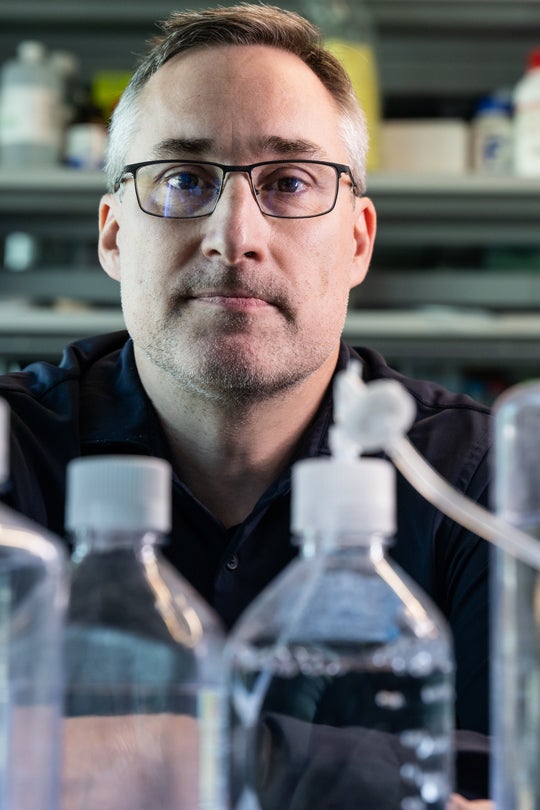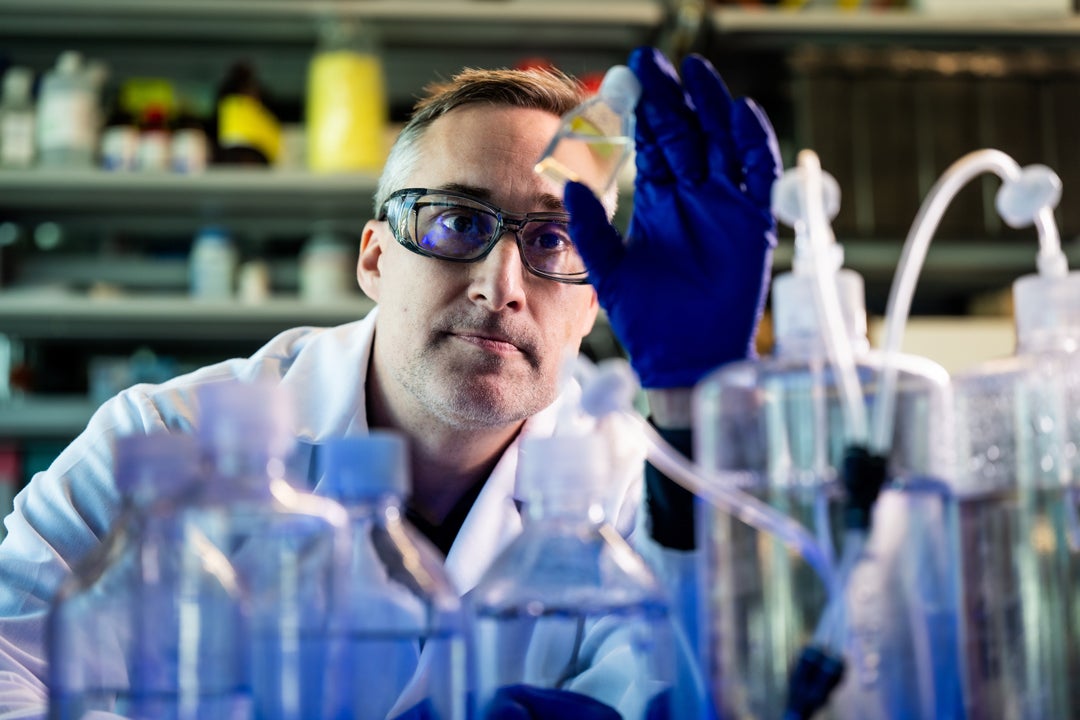
Sven Kranz’s research involves microscopic organisms with planetary impacts, processes spanning microseconds to millions of years, ocean expeditions and exacting experiments.
“The curiosity is really looking into the minute details of tiny organisms and how they affect global cycles,” said Kranz, an oceanographer and associate professor of biosciences. His research focuses on phytoplankton around the world, from the freezing Antarctic Ocean to the tropical waters of the Indian Ocean and the shores of Texas. The plant-like microorganisms are primary producers, meaning they create their own food from sunlight, and they form the base of ocean food webs worldwide.
“New estimates indicate that the Southern Ocean contributes about 45% to the oceanic CO2 removal from the atmosphere,” Kranz said. “Phytoplankton there have an enormous impact on the planet.”
Understanding how these microscopic, unicellular organisms function, and how they respond to environmental change, is one key to accurately modelling the effects of climate change. It is also an incredibly complex puzzle with questions ranging from biophysics and cell biology to biogeochemistry and oceanography.
Kranz said the important questions can range from phenomena occurring over a billionth of a second, like wavelength dynamics, to tens of thousands of years, like glacial-interglacial cycles. While there is a well-established connection between the energy efficiency of phytoplankton and large processes, like atmospheric CO2 uptake, there are myriad questions about how environmental changes impact the organisms, and how those impacts affect climate. “That’s where ecology, evolutionary biology and physiology really come into play,” he said.

In labs, phytoplankton research has often been performed with non-variable light and temperature, but Kranz said such simplicity misses something essential. “Nature and its variability have so much impact on the responses that lab experiments focusing only on one mostly constant parameter may not tell us much,” he said.
His group takes a holistic approach, combining experiments, fieldwork and modeling to capture natural complexity.

“Looking at the energy availability in the cell, under one condition or two opposing conditions, really gives us a much better idea about what is happening on a cellular level. These data then can be used for cellular modeling, global modeling, and at the end of the day, climate impact assessments."
In many cases, Kranz said his team has to construct its experimental setups from scratch because they are the first to try and recreate a specific set of natural conditions in the lab. Their experiments have examined 24-hour cycles of light and dark, seasonal changes in the Antarctic, variations in cloud cover, marine heat waves and ocean currents that mix populations of phytoplankton and cycle them between shallow photic zones and deeper, darker and colder depths.
The work is challenging but rewarding.
“My research has been cited in the Intergovernmental Panel on Climate Change,” Kranz said. “Only when you measure ecologically and environmentally important key organisms, and their responses to multiple different parameters, do you get predictive results.”
Accurately communicating results is also a critical part of the science, he said. “What’s occupying my mind today is ‘How can we communicate our science better? Not just to students but to politicians, stakeholders and decision makers. We need to communicate that even the small things matter.”

